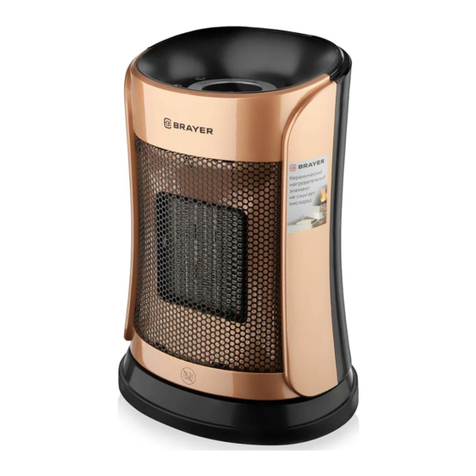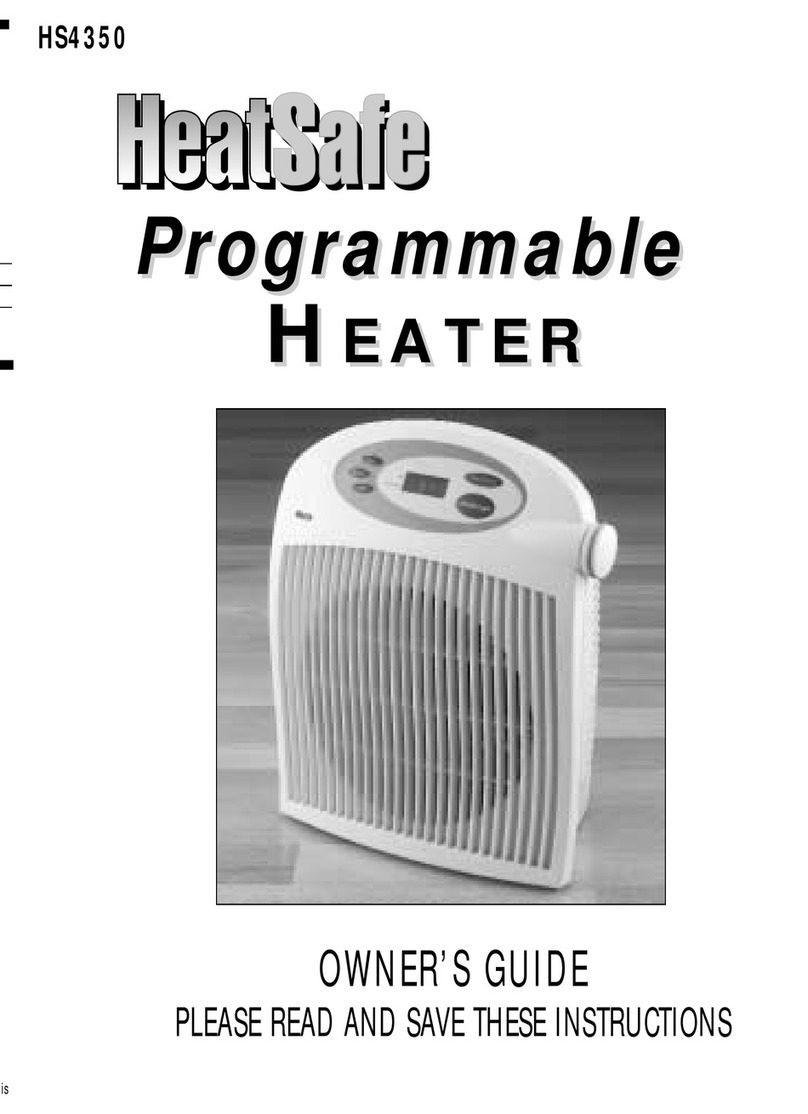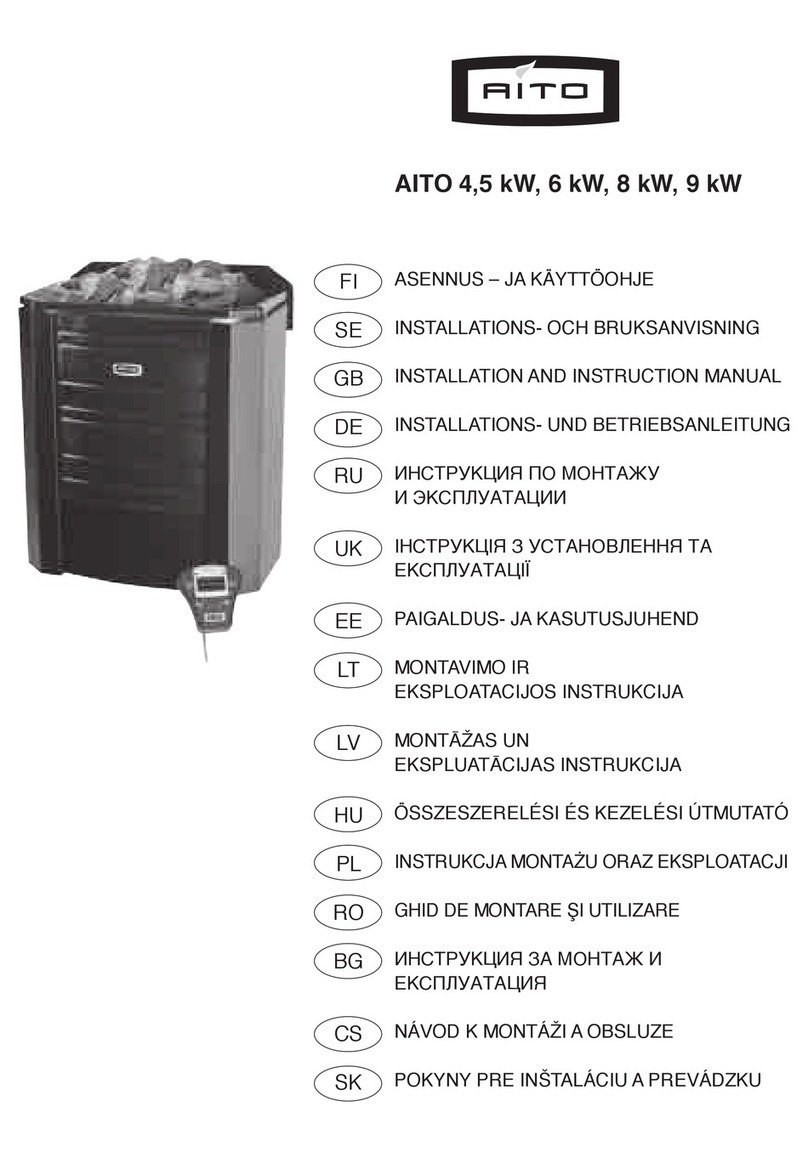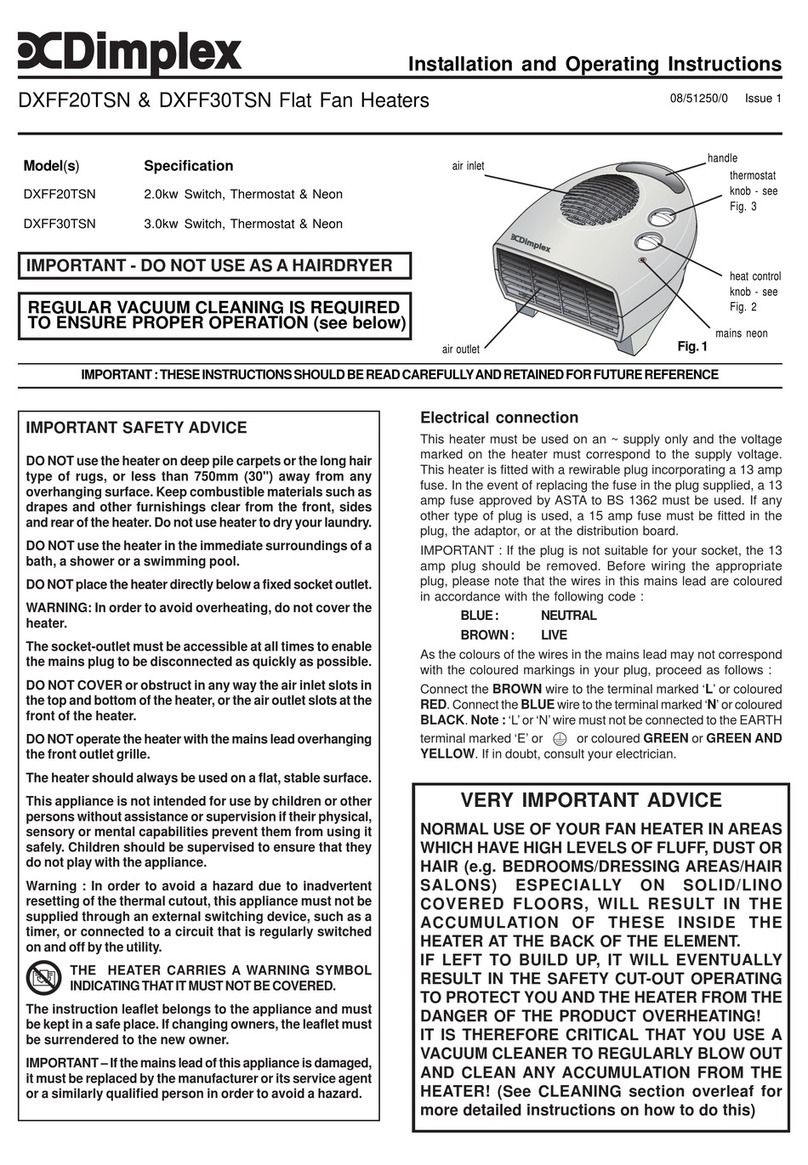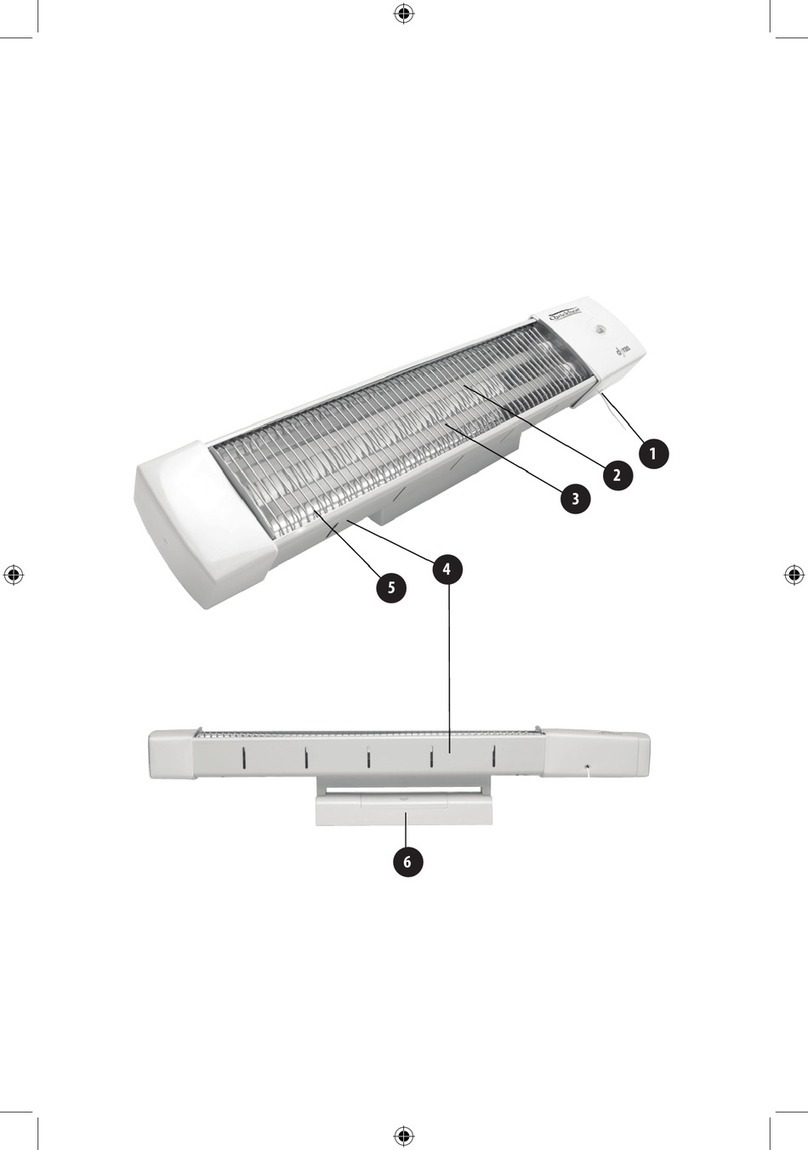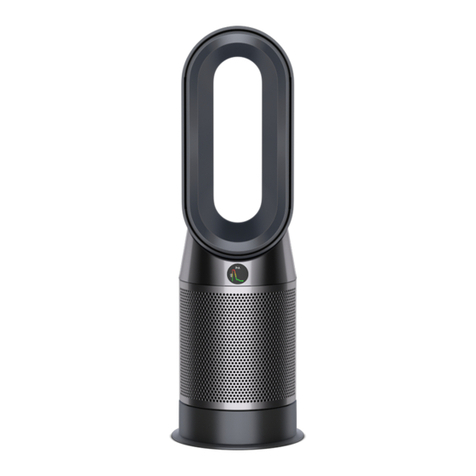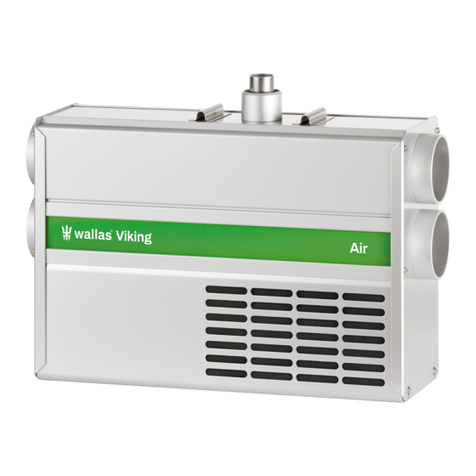All Nighter Stoves 16504 User manual

ruilUnlsfl$luvus
INSTRUCTION
MANUAL
for the proper core ond ssfe operotion of qour new
RADIANTROOM T+EATER SOLID FVEL TYPE
Y
I
k'
SAFETYNOTICE
IF
THISALL
NIGHTER
SOLID
FUELROOMHEATER
ISNOTPROPERLYINSTALLED.A
HOUSEFIRE
MAY
RESULT.FORYOUR
SAFETY,
FOLLOWTHEINSTALLATION
DIREC-
TIONS.
CONTACT
LOCAL
BUILDINGOFFICIALS
ABOUTRESTRICTIONS
AND IN-
STALLATION
INSPECTION
INYOURAREA.

-,]
:l
I
I
TABLE
OF
CONTENTS
Page
Number
SAFETY
FORTHE
ALL
NIGHTER. ...1
INSTALLINGTHEALL
NIGHTER. ,......2
CHIMNEYCONSIDERATIONS. ....5
OPERATING
THEALLNIGHTER... ....6
BreakingIn... .....6
FireBuilding .....6
AshRemoval... .....6
Creosote- FormationandControl.. .....6
FUELFORTHE
ALLNIGHTER.
.. ...7
ALLNIGHTER
INSTALLATIONCHECK
LIST. ....8
LIMITEDWARRANTY .BackCover
t
CONG
RATULATIONS'
You are now
the owner of an airtight,efficientwoodburning
stove!
lt should
be a
wholesome
andecologicallycorrect
addition
to
your
environment.
You
may
cook
your
mealsas
you
heat
your
home
on your
new
All Nighter
Stove.
Pleasekeepin mind
that a
woodburningstoverequires
a little
morecareand
attentionthanothertypesof heaters.
Woodmust
be
cut,seasoned,
stacked,and
installed.Becausethe All Nighter
is
designedto burnfor long
periods,
it is
easy
fortheoperatorto burn
the stove
continuously.When
the All Nighteris
properly
connected to a UL Listed ResidentialType Building
and Heating Appliance
chimneyor
a masonry
chimney
(see
"Evaluating
an
Existing
Chimney,"
page
4),it
only
requiresfuel
additionsa few
times a day.
Do not forget
to use
the
ashes
on
your
garden,
as they
contain
lime
andsmall
tracesof potash
and
phosphorous.
Read
this manual
carefullybefore
initialoperation.We hope
that
it will be
a
helpful referenceand
that
your
All Nighter
givesyou
many
years
of continuedser-
vice.

THINK
SAFETY
THINK
SAFETY
THINK
SAFETY
THINK
SAFETY
TH|NKSAFETY.AVo|DPoSS|BLEHAZARDS
This
stove
is to be
operated
only
by
a responsible
person!
All personsoperating
this stove
must be
familiar
with the safety
and
operating
sections
of this manual
!
Never
allow
an
uninformed
person
to assist
in operation
ol this stove!
Never
allow
children
to have
access
to this stove!
ownershiPcar'iesaresponsibi|itywhichmustbeexe'cised'ManyPersonsarequa|i|iedtooperatoa
residentiat
cenrrat
heating.V"rlli, lii"lii'i"" tu "'o"ttofi"a
bya
simple'thermostat'
In
conlrasl'wood
burnlng
stoves
should
be operated
only
by
quallli€d
persons'
Gel
io know
your
stove,
unolrsiaira
its
habits,
and
you
should
be able
to rest
in cozy
comlorl.
SAFETY
RULES
1.Instaltation
muslbe
incompliance
with
the
state
and
local
building
codes.
consult
your
local
building
in-
spector
for
permils
and
advice
prior
to beginning
inslallation'
. 2.
Always
use
an
Underwriters
Laboratory
Listed
Residential
Type
Building
and
Heating
Appliance
chimney
system.
t.
F g Alwavsconsider
theclearance
dimensions
given
in
the
installationseclion
of
this
manual
as
minimum'
F Heve',
allow
obiects
to be
placed
closer
to
the stove
than
36"'
Never
rununinsulated
stovepipe
through
combustible
walls'
Never
use
gasoline,
gasoline
type
lantern
fuel,
kerosene,
charcoal
lighterfluid,
orsimilar.liquids
to
startor
;,freshen
u6"a
fireii this
heaiir.
Keepall
such
liquids
wellaway
lrom
theheater
while
it
is in use.
6. Keep
chimney
andstovepipe
clear
of creosote
build-up
to prevent
chimney
fires.
Build'up
should
becheck'
ed
periodically,
especially
during
initialoperation'
7. ft.
stovepipe
is used,it shouldbe
22ot 24
gauge
black
or
bluedsteel.
NOTE:
This
pipe
cannot
beused
to
go
through
any
combustiblewallor ceiling.
B.Each
ioint
in
your
pipe
systemshould
be
fastened
with
threesheet
metal
screws
evenly
spaced
around
pipe.
L Thisroom
heateris intended
foruse
with
woodfuels
only'Do
nol
useother
fuels.
SAFETY
NOTICE
IF
THISALL
NIGHTERSOLID
FUEL
ROOM
HEATER
ISNOT
PROPERLY
INSTALLED.
A HOUSE
FIRE MAY RESULT.
FOR
YOUR
SAFETY'
FOLLOW
THE INSTALLATION
DIRECTIONS.
CONTACT
LOCAL
BUILDING
OFFICIALS
ABOUTRESTRICTIONS
AND
INSTALLATION
IN-
SPECTION
INYOURAREA.
4.
5.
Page
1

INSTALLING
THE
ALL
NIGHTER
STOVE
PREPARATION
1'
obtain
a BUILDING
tt*"lI I19t.
Your
local
building
inspector
for
the
insta
ation
of
your
ALL
NTcHTER.
Your
All
Nighter
is
not
to
be
used
in
a mobile
home.
2'
when
installing
the
stove
on
a
combustible
surface,
use
a NoNcoMBUSTTBLE
MAT
beneath
the
stove
asshown
in the illustration'
The
material
must
be
'3l8
i
".0".to. milboard
or equivarent
materiar.
The
equivalent
material
must
be.
approved
by
your
local
building
inspector.
This
stove
mar
must
extend
a
minimum
ot
eighteen
(18)
inches
outfrom'the
troni
oooior
tne
stove
and
eight
(g)
inches
outfrom
the
sides
iJl f,'*:ljii:t:;"rl:"j:: ,"
the
diasram
oetow).
pioteciion
shourd
"r.o
u"-
pii"Lo
,nier
chimney
connec.
3'
lnstructyour
installer
touse
sEcrloNS
oF22
GA
or24
GA6
rNcH
BLAcK
oR
BLUED
srEEL
srovE.plpE,
uL listed,
insurated
chimney
sec.tions,
litli,rs",
"nd
Jori".tor.
(as
snown
on
p-ag"
il. u." onry
uLristed
chimnev
componenrs
rorvour
saf;iv
i"o iiir'ii"_i"fi,iJrr"tion".
u;.;;i;;;;;';#'" s"" venr
for
soridfuers
is
unsafe
and
prohi5ited
by
tne
Nationir
rrr" pioi"ttion
Association
code. '
4'
use
a DRIP
TEE
for
ease
ot
clean
oul
and
easy
elimination.of
creosote
build.up
in
the
connection
of
your
stove
to
either
the
stovepipe
or
chimney
system.
All
stovepipe
joints
are
to
be
connected
with
three
sheet
metal
screws
evenly
placed
around
the
pioe.
FA'i
Lu
*E'
td'
i*
Sttilil'+#
RESULT
IN
A HOUSE
FIRE
APPL.IANGE..PROPERLY
COU
LD
HELPFUL
PUBLICATIONS
For
further
information
on
using
your
heater
safely,
obtain
tion
publication,
'^using
coal
and
Wood
stoves
safely,;'
r.rrFn
tery
March
Park,
Quincy,
MA
02269
a
copy
of the National
Fire
protection
Associa-
No.
HS-10-1978.
The
address
of
the NFpA
is
Bat-
other books
which
will be
helpful
in
the
safe
operation
of your
All Nighter
Stove
are:
The
woodburning
Encyclopedia,
Vermont
crossroads
press,
Waitsfield,
Vt.
Modern
and
classic
woodburning
stoves,
overlook
press,
Charlotte,
Vt.
Wood
Heat,
Rodale
press,
Emmaus,
pa.
lVood
Burning
Bulletins
are
also
available
from
various
Cooperative
Extension
Offices.
Page 2

-\
INSTALLATION
STEPS
. Step
#1.
place
your
stove
onthe
non.combustible
stove
matso
that
itiscentered
onthe
matwith
at
least8
inches
in
tromeach
side
and
the
rear,
alsoat
least18inchesol
the
matmust
extend
in front
froma
ooint
below
thestove
door.
Protection
should
includearea
under
chimney
connector,
extending
2" all
sides'
t
t St"p#2.
position
your
stove
at
least36
inches
away
fromanycombustible
wall
tothe
rear,
and
36"
F to a side
wall.
Step
#3.
Be
sure
your
stovepipe,
when
installed,
will
beat least
18inchesaway
from
anycombus'
tible
(wall)
material.
Step#4.
Level
your
stoveby
turning
the
adjustable
legsup or down,
Your
stove
should
not
rockor
tip in any direction.
Step
#5 lnstall your U.L. Listed Residential
Type Bldg. & Htg. Appl. chimney,
following the
manufacturers
instructions
that
will be
packed
with it.
Step
#6.
Besureto followall
local
building
codes
as
outlinedby
your
local
building
inspector
when
you
received
your
building
permit.
Page3

SOME
NORMAL
CHIMNEY
INSTALLATIONS
shown
are
some
normar
instailations
showing
some
of the necessary
safety
items
uring ti:L.'
Listed
chimneys,
Residentiar
rype
and
euiioing-Heating
Appliance.
WE
STRONGLY
RECOMMEND:
T.hq!
beforeyou
.attempt
any
chimney
system
in-
stallation,
you
obtain.
the.
requlreO
permiif., yo*
locat
.b.uitding
inspector.
your
tocit-ouii;i";inspec.
tor
will
also
inform
you
on
the
proper
local
buirding
codes pertaining
to radiant
room heaters
and
chimney
system
instaltations.
Through
a
Geiling
t lforn'r
pirch
f,oof
Insulated
Chimney
/System
Atllurtrblc
Flrrhi
ng
22
- 24
ga.
\Single Wall
Stoye
Pipe
Finirh Supporl
P.ckrgc
Thimble
ft.
rD--,
G
-tt
SlormColl.\
G \I
Through
on
Erterior
Holl
Insulaled
Chimney
Systom
Trim Colter
Finishing Cottrr
22
- 24
ga.
Stovepipe
W.ll Sugporl Xit
Through
a
Eigh
Pitch
or
Gholer
Geiling
Insulated Pipe Round Top
4,R,,",
-.22 - 24 ga.
Single
Wall
Stove Pipe
Roof
Support
xir
O
inirhrng Coller
Adju 3tabtc
Flashrng
Page4

lf
you plan
to usean existing
chimney,
the
following
steps should be
performed:
a. Make
sure
the
chimney
hasa lining
that
is
non-
porous,
smooth, and sealed;i.e.
no holes or
openingsin the
joints
or liner.
b. Make
sure
thechimney
is
clean
and
free
of creo-
sote
build-up.
c. The
top of the chimney
shallextend
at least
3
feet above
the highest point where it passes
through
the
roof
of
a
building,
andat
least
2 feet
higher
than
any
portion
of a buildingwithin 10
feet.
d. Make sure clean-out
on chimney is air tight
when
closed.
A poorly
constructed
chimney
will be
a constant
source
of trouble
and
create
a poor
source
of heat.
The material
used
to construct
a chimney may be
any of a number of types: brick, stone, cement
blocks,
or insulated
metal.
The
construction
of a
chimney
should
be design-
ed
to retain
as much
heat
as
possible
to reduce
the
cooling of your chimney and also reduce the
creosote
andcondensation
build-up
especially
when
holding
your
fire
overnight.
The lining should be smooth, clean and not
porous,
so that it is easily
cleaned
and will not ab-
sorb moisture.
The size
of the liner
should
not be
reduced
to a size
smaller
than the stovepipe
con-
necting
the stove
to the chimney.
Because
smoke
and heat
travel
upward
in a spiral
motion,
a round
liner is most desirable.
A square -i. rectangular
shapedliner
with rounded
cornersis
more
efficient
than
onewith
sharp
corners.
Any
space
between
the
liner
and
outer
wall
should
be
DEAD
AtR
space,
not
a
circulating
air
space.
Dead
air
will retain
heat;
cir-
culating
air will chill the liner.
A chimney
may be
much
too
large
for
the stove
to operate
in
a
satisfac-
tory manner,
but
we
seldom
find
one too high.
The followingguidelines
will assist
in planning
a
stove'to-chimney
installation.
In addition
to these
guidelines,
always
consult your local building in-
spector.
1.
The
chimney
to which
the
should be clean,
free
of
tight.
stove
is
to be
attached
obstructions,
and air-
2.A
chimney
lower
than
the roof
line
will
besubject
to
a downdraft
andincreased
creosote
formation.
3.
Single
wall
pipe
will
chill
rapidly
and
cause
creo-
sote
build-up.
4.
A
single
brick
wall
chimney
wilt
also
chillrapidly,
causing
creosote.
5.A porous
cement
block
chimney
without
a
good
liner
will give
poor
drafting
and
cause
creosote
problems.
6.
A short
single
wall
metal
extension
on
the
top
of
any chimney will chill rapidly and cause
creosote.
CHIMNEY
CONSIDERATIONS
e.
Chimney
should
have
achimney
cap
to
help
pre-
vent
down
drafts.
f.
Never
connect
two stoves
on
the samelevel
to a
chimney.
g.Do not
extend
height
of chimney
with
a single
wall metal
extension.
lf you plan
to install
your
own chimney,
follow
the
generaf
examples
which follow,
in addition
to con-
sulting your local building inspector and stove
dealer. Use only Underwriters
Laboratory
Listed
Besidential
Type
Building
and
Heating
Appliance.
7.
The flue
size,
shape,
and height
of any chimney
areequally
as important
as material
used
to
con-
struct
the
chimney.
8.All
chirnneys
should
beconstructed
with
a
clean-
out
that will be
airtight
when
closed.
9.A straight
chimney
is best.
lf an
offset
chimney
is unavoidable,
it should
be
gradual,
not
sharp.
10.
The
height
of
any
chimney
should
beseveral
feet
above
the
highest
section
of the
roofline.
11.
A chimney
should
havea chimney
cap to help
prevent
downdrafts.
_ lt is imperative
that the installation
be airtight.
This
is best
accomplished
by
usingfurnace
cement
at each
pipe
joint,
and
where
the stoveis
joined
to
the
pipe,
and
where
the
pipe
enters
thechimney
flue.
The All Nighter is
designed
to operate
on an
air-
tight principle.
Any air leak
will cause
the draft
to
draw at points where least resistance
is offered,
such as at joints,
where
pipe enters
flue,
around
loose
flue
thimble,
other
flue
openings
into
chimney,
around clean-out doors in chimney, or wheie
decayed
mortar
between
bricks
has fallen
out. All
tl''gr" could permit air to leak into the chimney.
When
this occurs,
the gasses
and smoke
are not
drawn
of
f
the
stove
in
proper
amounts,
causing
them
to -build
up in the stove,
and resulting
in i,back_
puffing." All leaks must be eliminated.
Air must
enter
only
through
the
proper
entrance.
Downdrafts
in a chimney
may cause
a stove
to
smoke.
A downdraft
may
be
caused
by
air
currents
being deflected
down the chimney
by nearby
ob-
jects,
such
as trees,
buildings,
or iand
formafions.
Downdrafts
may also be caused by flue gasses
which are
chilled
too quickly
as they pass
up the
chimney.
As the gasses
cool,
they become
heavy
and
other-gasses
from
the wood
fire
have
to push
i
cof
umn
of heavy
air
ahead
of them
in
order
to escape
up.the
chimney.
This
could
result
in ,,back
puff
ing"
or back
pressure,
odors
in the house,
or poor
com-
bustion, which can be annoying.
To correct a
downdraft
caused
by
a poor
chimnby
design,
it may
benecessary
to consult
a
professional
wno
is
able
to
improve
the
chimney
design.
EVALUATING
AN
EXISTING
CHIMNEY
Page
5

OPERATING
THE
ALL
NIGHTER
STOVE
BREAKING
IN PERIOD
All
new
stoves
require
a
break
in
period
of at least
seven
days
of continuous
burning
befor:e
they
begin
to operate at peak efficiency. Many new stove
owners
are
unaware
of this
and
sometimes
become
dissatisfied
with their new stove.
please
give
your
stove
the
opportunity
to break
in
properly
by follow-
ing
these
instructions
carefully.
We have
applied
a matte
black 12000
F paint
to
your
stove
that requires
that
your
first
two or three
days
of operation
should
be
slow
to moderate
burn-
ing
so
your
may
temper
the
finish
and
the
construc-
tion
of the
stove.You
should
also realize
thatthe All
Nighter door is made
of one
of the finest
quality
castings
that also requires
a breaking
in
period.
FIRE
BUILDING
1.
Place
paper
and kindling
toward
the front
half
of
the stove.Burning
paper
will help
start
the kind-
ling,
as
well
as help
to create
a draft
in
the chim-
ney.
2.
Openthe draftvents
on
the
door
to
allow
air
pass-
age
into
the stove.
3.lgnite
paper;
when
kindling
is
burning,
add
a small
amount
of dry wood and build
up gradually
to a
hotterfire.
Do not stuff
the stove,it needs
oxygen.
Never
use
kerosene
or gasoline
as starters.Mixing
hard
and
soft woods is a good fire starter.A three log fire
should
bea minimum
structure.
Your
All Nighter
will
handle
most
anytype
of wood,
but some
types
pro-
duce more heatand will hold
a
fire longer.
When using split logs,
avoid placing
flat sides
down. For
the most heat
combustion,
air must be
ableto circulatearound
and
throughthe fire.
Donot
use coal or charcoalas fuel.
Use
of such fuels
may
resultin
toxic emissions.
CAUTION
! Open the door
slowly
when
checking
the fire
or reloading.
To holda
fire
overnight,fill
the
f
irebox
overseveral
burning
logs.The
draft vents
should
be open
four
turns
for
a normal
overnight
f
ire.Donot
operatewith
the
door
open
or ajar.Combustion
air
is
to
be
provid-
ed through
air inlet
ports
only.
The
exactsettingwill
dependon
the
chimney,
on
wind
velocity,
thetype
of
wood,
andthe
temperature.
These
same
conditions will govern
the amount
of
ref
ueling necessary and the frequency of ash
removal.
Undercertainconditions
of use,
your
All Nighter
Stove may dischargea limited quantity
of smoke
when
the charging
door is
open.
CAUTION!Do not
use or store
flammable
liquids
or materialsin
the
vicinity
of your
stove!
CAUTION
!
Overfiring
theappliance
may
cause
a house
fire.
lf
a chimney
connector
glows;
you
are
overfiring.
ASH
REMOVAL
Ashes
should
be
placed
in
a metal
container
with
a tight fitting lid. The closed container
of ashes
should
be placed
on a noncombustible
floor
or on
the ground, well away from all combustible
materials,pending
final disposal.
lf the ashes
are
disposed
of by
burial
in
the soil
or otherwise
locally
dispersed,
they
should
be
retained
in
theclosed
con-
tainer
until
all
cinders
have
thoroughly
cooled.
The
outside
temperature
and
the
temperature
you
wish
to maintain
in your
home
will generally
deter-
mine
the frequency
of refueling
andof ash removal.
Other influencing
factors
will be the type of fuel
available,
how
well
your
house
is
constructed
andin-
sulated,
the location
of the stove in the house
in
respect
to doors,
partitions,
and
openorclosed
stair-
ways.
It is not necessary
to remove
all of the ashes.
Up
to an inch
of ashes
on the
bottom
of the stove
makes
a
good
bed
on which
to builda
fire.
CREOSOTE
. FORMATION
AND
NEED
FOR
CONTROL
An
efficient,
airtight,
woodburning
stove
tends
to
build
a deposit
called
"creosote"
on the walls
of the
chimney
system.
lf you are operating
a low draft,
burning
soft
woods
(with
lots
of resins),
the wood is
wet
or unseasoned,
or
the chimneyis
cool,
you
will
develop
a creosote
build-up.
When
wood
is burned
slowly,
it produces
tar and
other
organic
vapors,
which
combine
with expelled
moisture
to form
creosote.The
creosote
vapors
con-
dense in the relatively
cool chimney flue of a
slowburning
fire.
As a result,
creosote
residue
ac-
cumulates
on the flue lining. When ignited this
creosotemakes
an extremelyhot fire.
The
chimney
connectorandchimneyshouldbe
in-
spected
at least
twice monthly
during
the heating
season
to determineif a creosote
build-up
has
oc-
curred.
lf
creosotehasaccumulatedit shouldbe
removed
to reduce
the
risk
of a
chimney
fire.
Creosote
may
be detectedby
visuallylooking
into
a chimney. Professional chimney sweeps are
capable
of inspecting
and cleaning
your chimney.
Heavy
creosote
build-up
can be
removed
with
stan-
dard flue
cleaning
equipment.
This should
be
done
at regularintervals.
I
.f'
-?.
q
Page
6

There
are a number
of ways to keep creosote
build-upin
check:
1.
Havethe flue system
cleaned
at regular
inter-
vals.
2. Clean
out
the drip
tee once
a
week.
3. Burnseasoned
hardwoods
asmuch
as
possible.
4. Burn
an
open
fire
from
time to
time or
keep
the
damper
open,
especiallywhen
first
building
the
fire.
Thislets
the
steam
burnout
of the
wood.A
quick
hot fire
will also
heat
the chimneywalls
and reduce
creosote
formation
on the walls.
5.
Burn
a very
hot fire
once a week for an hour
while
the
operatoris in
the area
of the
stove.
Should a chimney fire occur, catt the fire depart-
ment
and
close
the
screwvents
on
your
stove.
lf
you
have
experienced
a
chimneyfire
andit is
ex-
tinguished,
do not go away from
the chimney
until
you
are
absolutely
assured
that
thechimney
and
sur-
r_ounding
structure
has
cooled,
and is not
damaged.
Creosote-fed
f
ires
burn
at
temperatures
which
could
damage
steel
or crack
flue
liners.
Creosote
removat
is
achieved
by disassembly
of
the stove
pipe
and removal
of the creosote
coating
with
wire
brushes
or similar
tools.
Similarly
there
are
special
wire brushes
available
to remove
creosote
from chimneys.
See your local woodburning
ap-
pliance
store
or
refer
to a chimney
sweepfor
f
urther
information.
FUEL
FOR
THEALL
NIGHTER
Wood fuel keeps us in close touch with our
ultimate
life
sustaining
forces
andMother
Earth.
lt is
a fuel
source
that is not
rationed.
Trees
come in
two
divisions:
softwoods
and
hard-
woods.
Softwoods
usually have
needles
and have
less
heat
potential.
They
are
fast
to
heat,
but
are
con-
sumed
rapidly.
Softwoods
are
usually
used
for
kindl-
ing.
Hardwoods,
usually
broadleaved-,
are
not
always
harder.
A
cord
of wood
is
a
pile
that is
fou:'feet
wide,
four
feet
tall,
and eight
feet long.
This
amounts
to 12g
cubic
feet,
but
due
to air spaciflg,
a cord
is usually
considered
to be
approximately
96
cubic
feet.
A
stove
cord
is
usually
l6 inches
long(one-third
of
a
standard
cord
length).
Every
tree
has
the
same
amount
of heat
energy
in
it pound for pound, approximately
g,600 BTU,s
(British
rhermal Units).
Different
species
have
dif-
ferent
densities,
hence
different
weights.
Most
fruit
wood
is
relatively
dense,
and
is
considered
to
be
ex-
cellent
fuel.
Wood
cut
and
used
the same
falt
/s worse
than
no wood
at att.
Wood
used in the fall, but cut in the spring,
Will a bright glow bring.
'Anon.
Page
7

CHARACTERISTICS
OF
SEVERAL
WOOD
VARIETIES
Species
Hickory,
Shagbark
Beech
Maple,
Sugar
Birch,
Yellow
Maple,
Red
Birch,White
Elm,American
Pine,White
Wgt
of
1
cu.
ft.
dry
45
40
lbs.
39 lbs.
39
lbs.
34 lbs.
34
lbs.
31
lbs.
22 lbs.
Heal
Value
Rating
best
best
best
avg.
avg.
avg.
avg.
poor
Coals
excellent
good
excellent
good
excellent
good
excellent
poor
Sparks
BTU/Cord
(in
millions) Splitability
30.9
27.5
26.8
26.8
23.4
23.4
21.3
15.1
few
few
few
interm.
few
interm.
few
many
intermed
iate-
tough
tough
tough
intermed
iate
intermediate
intermed
iate
one
of
toughest
easy
10.The stovepipedoes not extend into the
chimneyflue lining.
The inside
thimblediameter
is
the same
sizeas
the stovepipe
for a snug
fit.
A
doublewalledventilated
metal
thimble
is used where the stovepipe' goes
throughan
interiorwall.
The stovepipedoes not pass
through a
floor,
closet,concealed
space,or enter
the chimney
in
the
attic.
14.A UL Listed Residential
Type Building
and HeatingAppliancechimney
is used
where a masonry chimney is not
available
or practical.
The
chimney
is in
good
repair.
Thechimney
flue
lining
is not blocked.
The chimney
flue lining and the stove-
pipe
are
clean.
A metalcontainer
with
tight
fitting lid is
available
for
ash
disposal.
Thebuildingofficial
or
fire
inspectorhas
approvedthe
installation.
The company
insuring
the building
has
been
notifiedof this installation.
A fire has been
built,
draft
wasadequate,
andthe
fire
burned
smoothlY.
11.
12.
2.
13.
$
*'*-
'l
3.
4.
5.
6.
15.
16.
17.
19.
20.
8.
18.
9. 21.
STOVE
INSTALLATION
CHECKLIST
1.
The
stove is located
on a noncombusti-
ble mat of 3/8" asbestos
millboard
or
equivalentmaterial.
Floor
protection
extends
out a minimum
of 8 inches from
the sides
and back of
stove and 18" from the front
where
the
wood is loaded,
and
underchimney
con-
nector
ext.
(2"
all sides)from combusti-
ble
material.
The stove is spaced at least 36" away
from
combustible
material.
Stovepipe
of 22or 24
gauge,
6" dia.black
or blued
steel
is used.
The stovepipe
diameter
is not reduced
between
the stoveandthe
chimney
flue.
The
total
length
of stovepipe
is less
than
10feet.
7. Thereis at least
24" between
the top of
the stovepipeand the ceiling or other
combustible
material.
Thestovepipe
slopes
upwardtoward
the
chimney
and
entersthe chimney
higher
thanthe outlet
of the
stove
firebox.
The stovepipe enters the chimney
horizontally
through
a fire clay thimble
that
is higherthanthe outlet
of the
stove
firebox.
Page
8

---\
)
I
LIMITED
WARRANTY
CERTIFICATE
FOR
THE
ALL
NIGHTER
ROOM
HEATER
The
undersigned
warrants
the ORIGINAL
CONSUMER
PURCHASER
for
residential
useONLY
that:
The
All Nighter
all welded
steelfirebox
and cast
iron
doors,
under
use as a
wood-
burning
stove,
will be free
of defects in material
and workmanship
for a period
of
twe_nty'five
(25)years
from
date
of purchase,
except
as
to paint.
Components
of the
stove
are
onlywarrantedfor
a
period
of
one
(1)year
from
date
of
purchase
against
defects
in
material
andworkmanship,
if
properly
installed
and
under
ordinary
use;HOWEVER,
firebrick
and
optionalitems
aie
speiificiily EXCLUDED
from
this warranty.
lf such
stove
is found
to contain
the aforedescribed
defects
within
the warranty
periods
stated
above,
the undersigned
shall,
at its
option,
either
repair
or
replace
th6
firebox
or any
components
without
charge.
Written
notice
of any
such
defect
occurring
within
thewarranty
period
must
bemail-
ed
by certified
United
States
mail
to
the undersigned
immediately
on
the discovery
of
the defect,
togeth.erwith
a copy
of
this certificate,
upon
which
the Original
Consumer
Purchaser
will indicate
the
date
purchased,
serialnumber,
and
name-and
address
of
the Dealer.
The
undersigned
will
take
remedial
actions
as
provided
above,
within
Sixty
(6O)
days
after
the
defectis
substantiated.
This
Warranty
specifically
EXCLUDES
any incidental
or consequential
damages
resulting
from
the
purchase
or use
of a All Nighter
Room
Heater.
Some
states
do not allow
the exclusion
or limitation
of incidental
or consequential
damages,
so the
abovelimitation
or exclusion
may
not
apply
to you.
This warrantyg-ives
you specific
legal
rights,
and
you may
also
have
other legal
rights
which
vary
from
state
to state.
Model ALL
NIGHTER
STOVE
WORKS
WEST,
INC.
425
N.W.
"K" Street
Richmond.
lN 47374
Serial No.
J
UJ
F
o
ul
=
=
J
=
o
z
I
o
F
UJ
o

NO.
1
2
3
4
5
6
7
I
I
10
11
SERVICE
PARTS
(See
Manual
Cover
for
number
references)
PART
NAME MID
GLO.MOE JUMBO
MOE
DOOR 161087 161032
DOOR
BAFFLE 160288 160085
cool HAN
DLE 160070 160070
3/8
-
16
x 4 BOLT MOO1
6C2 NO61
1C2
DRAFT
SCREW
VENT 160093 160093
3/8
.
16
JAM NUT NOoOCHJ NOoOCHJ
3/8
.
16
HEXNUT NO600CH No600cH
LEG
BOLT 160094 160094
ALUMTNUM
CAP 160069 160069
HINGE
PIN EDTOTBH EDTOTBH
GLASS
ASS'Y 161110
These
parts
may
beordered
lromAll
Nigher
stove
works
west
Richmond,
Indi
ana47374
GIANT
GLO
1
61
030
1
60070
N061
1C2
1
60093
NO6OCHJ
NO600CH
1
60094
1
60069
EDTOTBH
1
61
056
SPECIFICATIONS
MID.
GLO JUMBOMOE GIANTMOE
LENGTH
36'' 31'' 31'' FLUE
SIZE
Wf
DTH 211/2" 31" 31" MAX.
LOG
HEIGHT 31y2" 31
" 31
" LENGTH
WEIGHT
436
LBS. 5OOLBS. 470
LBS.
MID
6"
24"
JUMBO GIANT
8" grt
24" 24"
BLOWER
MODEL
STOVES
USE
ALL NIGHTER
BLOWER
NO.169011
THIS
INCLUDES
A UNIVERSALELECTRIC
BLOWER
JAIC
14ON#
IMPORTANT!
The
otherslde
of thisWarranty
fgrl llugt be
property
lilled
out
andreturned
to All Nighter
Stoveworks
West,
lnc.
Richmond,
Indiana47374
within
30days
of
purchase
orthe
warranty
is n
ullandvoid.The
purchaser
shoulci
fill out
andKeepthe
top
portion
of this form
for
theirown records.
-(rT-LRF-i-i]r\r-
' 11tr- ALL
Breaki
ng In.
Fire
Building.
Ash
Removal.
Creosote
- Formation
and
Control.
FUEL
FOR
THE
ALL
NIGHTER.
ALL
NIGHTER
INSTALLATION
CHECK
LIST.
i
.&:
Jti '
_ .rF-
J
ut
F
s
o
UJ
=
=
J
=
o
z
-
o
F
UJ
o
LIMITEDWARRANTY. .... Bd
This manual suits for next models
2
Table of contents
Popular Heater manuals by other brands
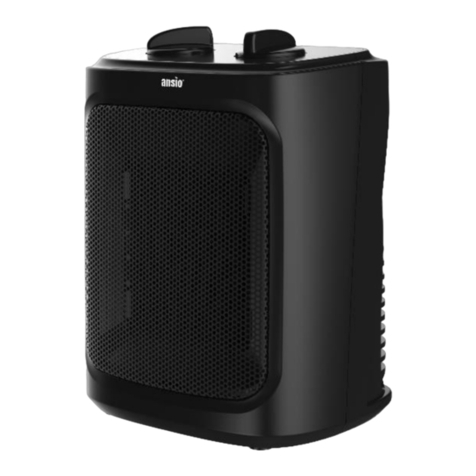
ansio
ansio 1308 Instructions and operating manual
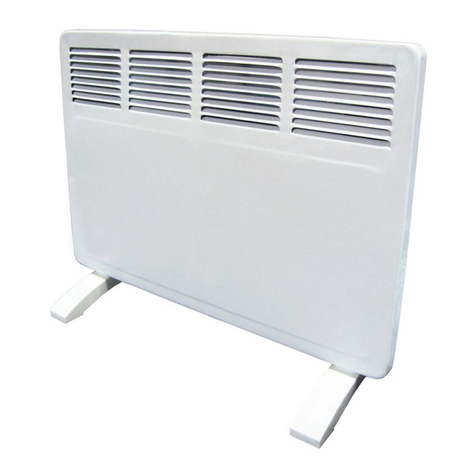
IRIT
IRIT IR-6207 Manual instruction
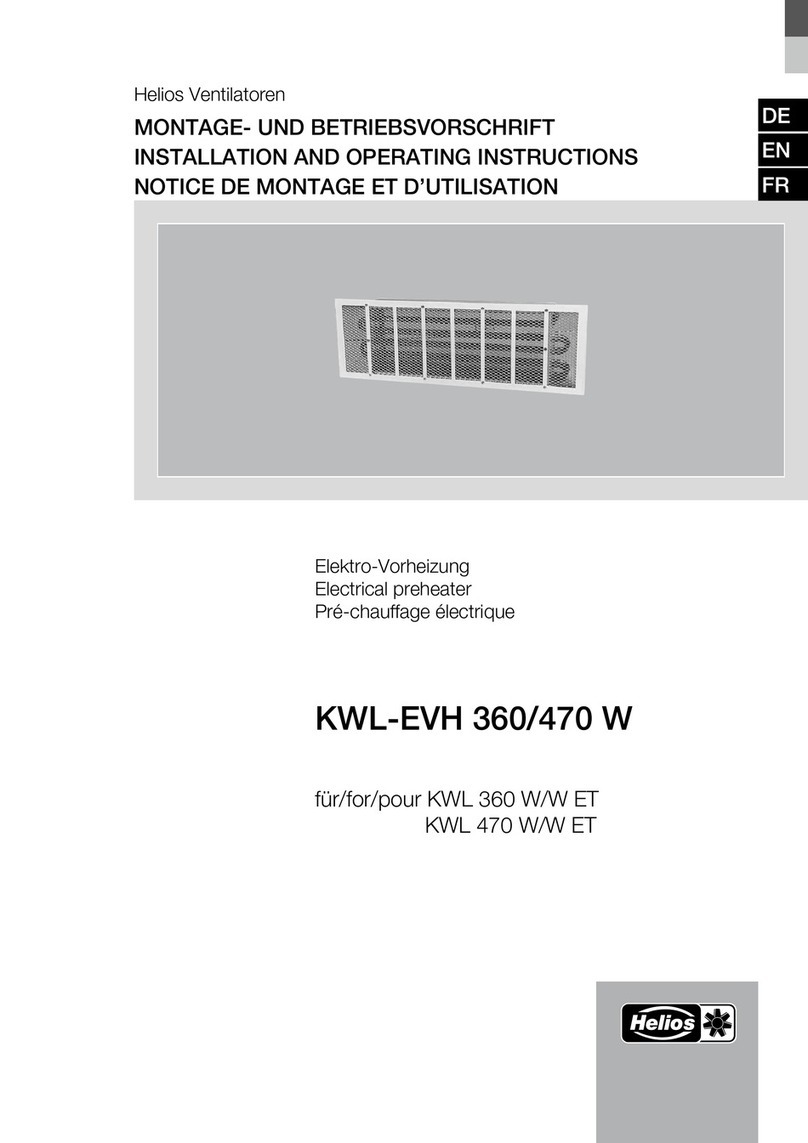
Helios
Helios KWL-EVH 470 W Installation and operating instructions
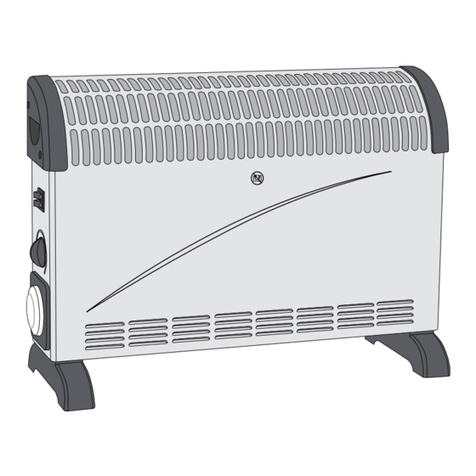
Clas Ohlson
Clas Ohlson 18-1271 instruction manual

Fondital
Fondital gazelle techno classic instruction manual
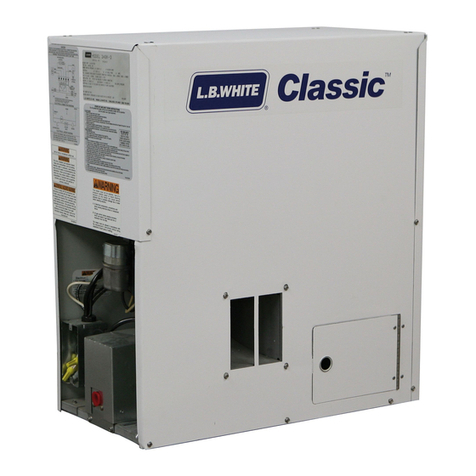
L.B. White
L.B. White Classic 346 Owner's manual and instructions
